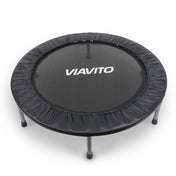Shuttlecocks
Achieve consistent flight and durability with our premium shuttlecocks at Sweatband. Ideal for training and competitive play, our shuttlecocks are designed for optimal performance. Choose from renowned brands like Yonex and Wilson for reliable quality. Enhance your badminton experience with our selection of high-quality shuttlecocks.
- Featured
- Best selling
- Alphabetically, A-Z
- Alphabetically, Z-A
- Price, low to high
- Price, high to low
- Date, old to new
- Date, new to old
FiltersFilter & Sort
No products found
Shuttlecocks at Sweatband.com
The shuttlecock is one of the most descriptively named and slow-moving of all projectiles in sport. ‘Shuttle’ refers to its back and forth motion and ‘cock’ its resemblance to a bird, since originally all shuttlecocks were made using feathers.
Shuttlecocks, in some shape or form, have been played with since the fifth century in the Asian game jianzi, which is still popular today and involves keeping the shuttlecock aloft with hands and feet rather than paying for points over a net with rackets.
Because they have built-in drag badminton is a strictly indoor game for the serious player as the slightest draft will affect the flight path of the shuttlecock and interfere with play.
Shuttlecocks for badminton are slightly different as they’re conical in shape and made of either feather or plastic. They also have varying speeds; so the material type and speed category are the main considerations when investing in your own.
Shuttlecock speeds are classified from 75 (slow) to 79 (fast). Fast shuttles can travel relatively long distances while slow shuttles are unlikely to fly far. Shuttle speed is also affected by temperature, altitude and humidity so a touring pro will vary shuttle choice accordingly.
Feathered shuttlecocks ‘feathers’ are the choice of the pros and consist of 16 goose or duck feathers (apparently only from the left wing of the donor bird). They are generally quicker – which is why they’re suited to better players. But, for obvious reasons, the life of a feather shuttlecock is limited and few survive a whole game intact.
Feathers have been known to come off the strings at speeds in excess of 200 mph but their deceleration is fairly fast. Therefore a game played with feathers will seem faster and allow players more time to plan and play their strokes. Because feather shuttles fly more quickly off the racquet face they also tend to cause less shoulder impact and injury.
As the materials are natural, the cost of production is higher and so if you’re still a way down the learning curve then the plastic option is for you.
This is why recreational players and those who are still beginning prefer the cheaper, more durable and slower ‘plastics’. Plastics fly more slowly on initial impact but slow down less towards the end of their flight. The only downside to plastics is that they’re actually less consistent in terms of speed and flight, which is why as your game improves you’ll probably go for the feathers option.
